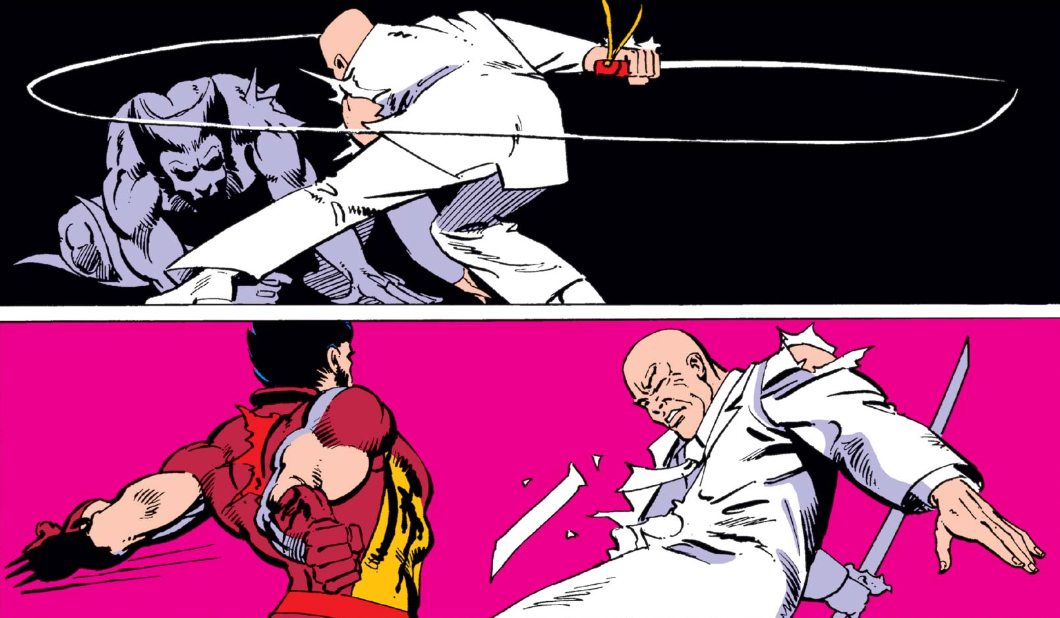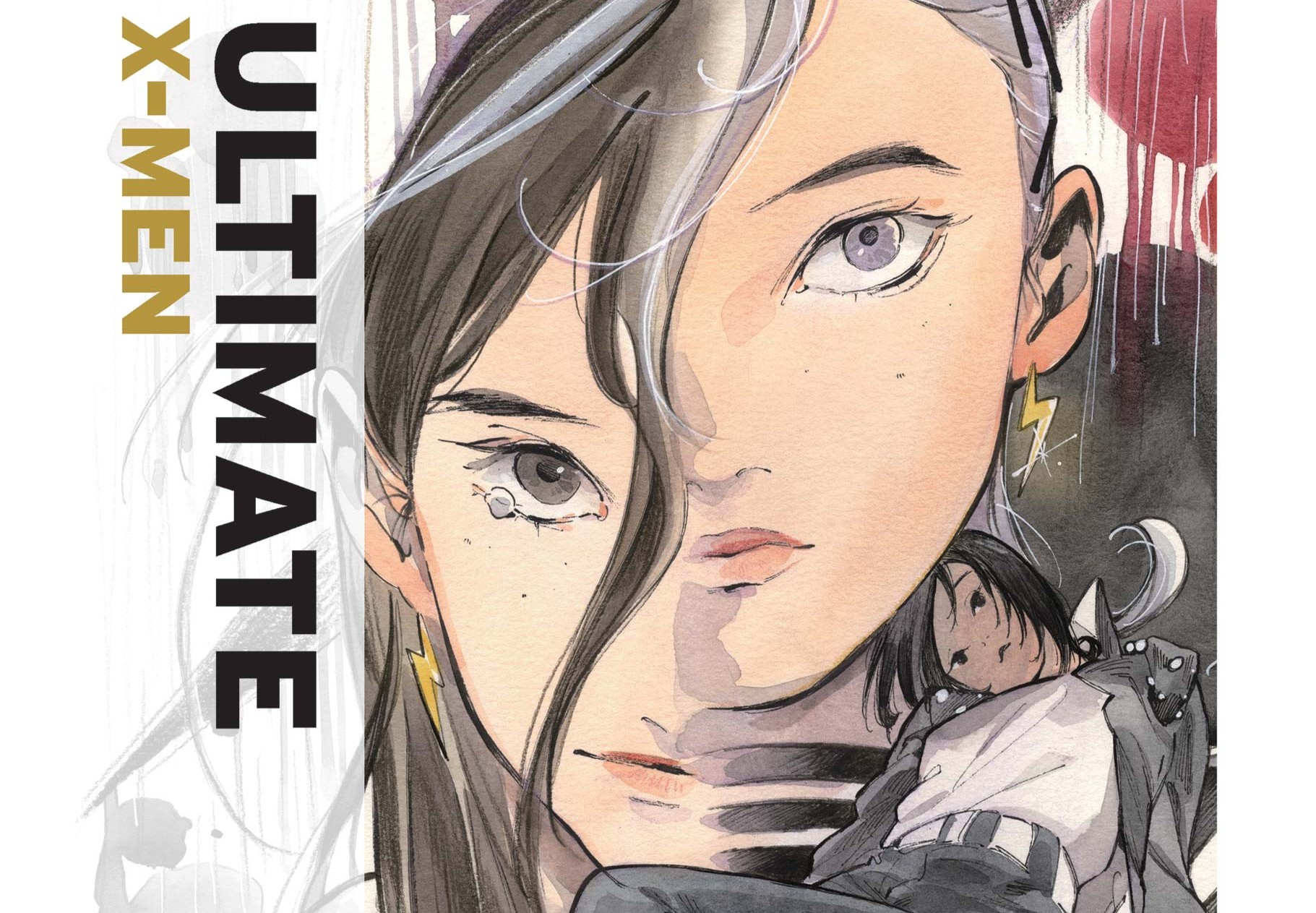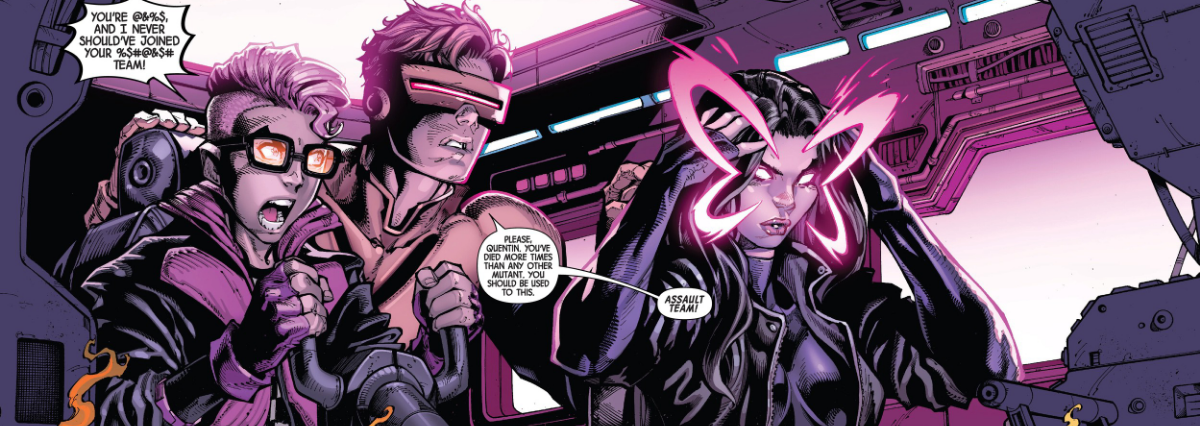Gene Colan Saves Daredevil
Pedal to the Devil
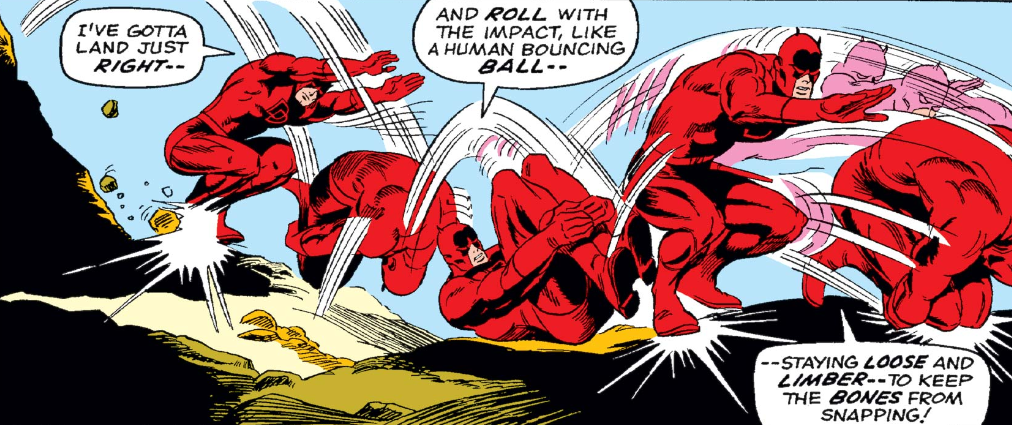
The Man Without Fear, or a Consistent Artist
Halfway through his introductory run of Daredevil, Stan Lee faced two looming threats, artistic consistency and painful mediocrity. For the entire preceding run of the series, Lee had been unable to nail down long term artists. This resulted in a cycle of the book coming to a screeching halt just as it is picking up speed. The chemistry and collaboration between writer and artist never seemed to truly click, with the slight exception of John Romita Sr. However even Romita’s run would be quite short at the end of the day compared to Lee himself. Despite the rotating bullpen of artists, the book always looked good and the art was never distracting or particularly lacking. Being passable actually highlighted the main issue facing The Man Without Fear, his identity.
As outlined in the previous post for this series, there is a certain amount of crossover between Daredevil and Spider-Man design wise, with their bright red costumes and contraptions to swing across the city. Add on top that Matt Murdock doesn’t have flashy powers, and throw in some truly generic villains, and you have a recipe for the blandest superhero comic around, especially with Spidey on sale at the same time. The saving grace of the first half of Lee’s run is the melodramatic plots and character beats which essentially bookend each issue.
Nearly two years in though, something seems to click and the book makes some big changes. First and foremost, Gene Colan is brought in on pencils for the remainder of Lee’s run, barring the final issue, which is forgivably given to Barry Smith. Colan’s work will elevate the book from an amusing bit of entertainment history into a more digestible modern experience. Next to the artistic jump, the stories will actually revert, almost re playing the hits.
The plots bring back older villains, and puts the characters into positions where their development retreads, but does so with much more intention and room to breathe. It is as though the story takes a step back and realizes that it’s going to be much more long running than the creator’s initially predicted, and as a result attempts to flesh out the ideas that have already been presented. This rehashing may seem tedious to some, but the overall package is so much more enjoyable, it arguably turns the book around for the better.
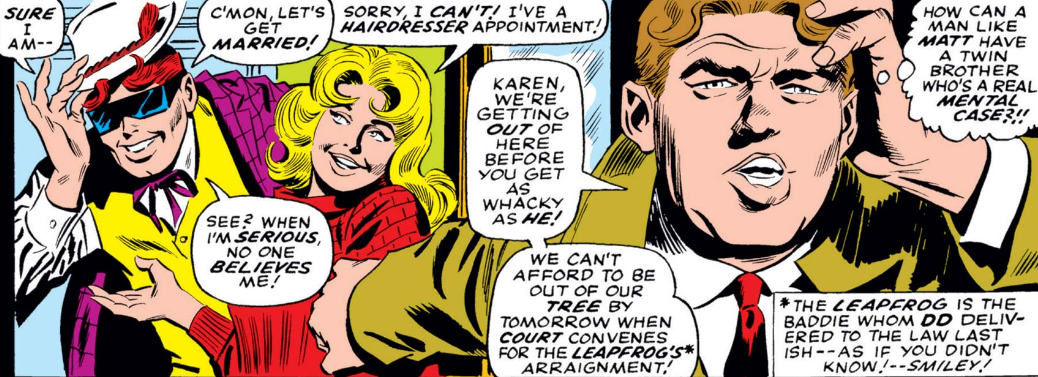
Karen, Matt, and Foggy
The cast of Daredevil stays relatively consistent as the series extends past year two, despite the character’s frequent assertions and attempts to the contrary. Each of the main trio makes their own bold exit from the central law office, for varying durations and to differing degrees of dramatic success. The messy law office thrives off spontaneous decisions and some deep traumas.
There’s not a lot of personality deviation from their introduction, each keeping a facade of the mild mannered office worker, while sharing more petty and self serving thoughts with the reader. Instead of sweeping changes Lee opts to run back each of the characters and hit their best beats again and more thoroughly. The relationship between Matt and Karen, Foggy and Daredevil, or any of the cast’s career pursuits are mirrors of the previous storylines, but with more vibrant art and extended time.
This approach makes sense if the title and company was gaining lots of readers back on the publication date. There’s a good chance Lee and company had no idea which of Marvel’s characters would last for decades as opposed to months, so they would lead with their best foot forward. It does sap a bit of energy from the story’s momentum once the parallels become clear, but the extra development time elevates the neat aspects of the first portion of the run into genuinely captivating ideas.
The group is flawed and weird and petty and perfect. The three are all far from paragons of virtue, with a hundred things for which each one of them could be criticized. Their worse actions though are always clearly fueled by insecurities and personal woes, in a way that keeps the reader betting on these losing dogs. As the readthrough progresses hopefully there will be some long term shifts in the dynamics of the main group, as there will definitely be tonal changes for the entire book.
Mike Murdock, the True Daredevil
The most enjoyable story beat that Lee hammers home through his run is the third alter ego of Matt Murdock and Daredevil, that of his own twin brother Mike. With a completely flipped, extroverted personality, Mike does and says everything that Matt doesn’t. He zings Foggy and treats Karen with both open admiration and misogyny, which he otherwise would hold back. The interactions with Mike are consistently funny, and become quite distinct when conceptualizing just how broken a man has to be to deceive his two closest friends into thinking he is his own twin brother.
Matt, who is secretly Mike, who is secretly Daredevil, who is secretly blind, who secretly is also… Thor? The idea of a secret identity is explored rigorously by this series, and in many ways finds the limits of the concept. The book sees just about every combination of fake outs and surprise reveals between alter egos and costume swaps. Unfortunately superhero comics will fail to recognize tired tropes in perpetuity, making the entire concept feel a little like something that’s been seen before. However nothing out stays its welcome in regards to Mike, and the sheer absurdity of making an alternate personality such a prominent aspect of the story is an effective hook.
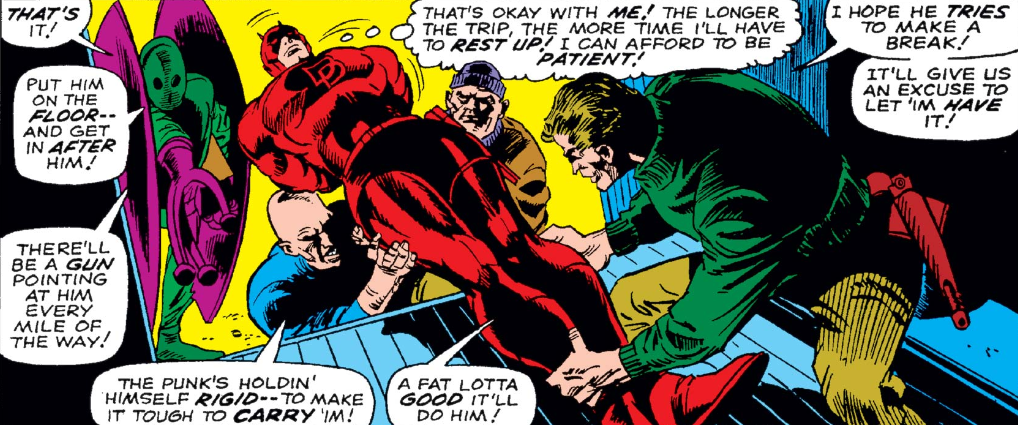
Beauty in Simplicity
For this run of Daredevil there is a distinct setup of a status quo vs unexpected interruption dynamic. Essentially the issue to issue plot revolves around the three person law office, vigilante and all, facing a threat that will upset their established everyday routine. Whether it’s a maniacal villain trying to murder Daredevil or a job opportunity for Karen, the obstacles facing the characters tend to be surprises that put the protagonist on the back foot. There is no overarching goal to the series or the hero, and they are both placed in positions where they are reacting as opposed to pursuing a specific end.
The organization of the story saps a lot of the narrative drama, as it is clear that most things will return to normal quite quickly, if there is even substantive change to begin with. However what it does establish is a reusable base, one that the creative team can use to create a consistent and long running comic. The tone and main cast become relatable and thorough as they are continually explored.
Each arc lasts only a few issues and generally starts with the simple premise of a vigilante and his law office. Quickly the convulsions of the series are added, with the heroes being as messy as the villains, and then all is right and finished with a bow at the end, and the good guy winning. The repetition makes binge reading a bit of a slog, but would have worked well for continually drawing in new readers or as a weekly pick up. The interactions are witty, the plots are bonkers, and the main drag for the series is it does not feel fresh.
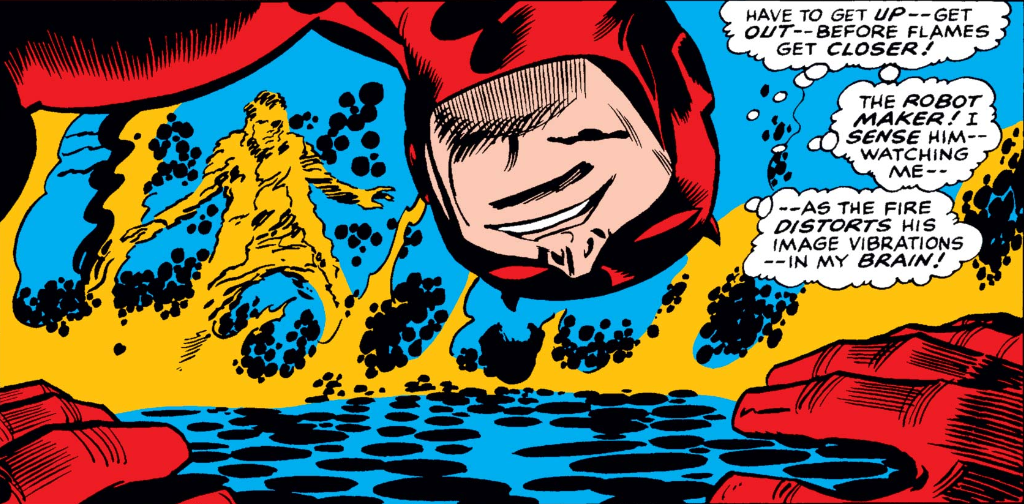
Get Your Words Outta My Comic
The nearly twenty five issues of idling story are almost entirely saved by the work of the series' new artist Gene Colan. The step up in consistency and quality are an equal testament to improved comic making and maintaining a primary artist, as well as to the talent of Colan. When the plot is less than engaging, the propelling force of the book really falls to the art. In the case of Colan’s run he rises to the occasion, and brings Lee up with him. The longtime writer may be at the peak of his dialogue powers in this run, writing smart wit and snark more than obtuse unnecessary descriptions.
The fact may be that Colan’s vibrant and clear illustrations simply did not necessitate any of the extraneous bubbles explaining what the art is meant to be. Equally true could be that the quality of the work was lessened when crammed with too many words and white spaces. Either way an improvement in art direction and a more focused writing style proved to be a recipe to fix the more prevalent drawbacks of the earlier issues.
The best example from this batch of stories is when Daredevil faces the Jester. Much like the other recent arcs, the formula is a weird and specifically themed villain has shown up to fight Daredevil and be defeated over three or four issues. The Jester is actually one of the longer arcs and the story is a pure slog when revisited today when clown villains are among the most played out tropes in the medium.
The Jester saga is completely worth reading for the art alone. Colan decides to play with the panels in ways that are unique for the relatively tame title, and heavily utilizes full pages of art. The dynamism from the integration of these techniques infuse the series with a little more heart, and sparks a bit of interest. Together with the panel to panel quality and the longevity of the artist on the series, this becomes a clear leader in the title’s early runs. Issue forty nine is the last for Colan but only for a bit, as he will return to collaborate with new staple writer Roy Thomas in just a few issues.

Closing Arguments
With the well established creators Stan Lee and Gene Colan both firing on all cylinders, Daredevil becomes a comic that can stand against the test of time. The stories are dated, and by modern standards even the art may be considered simple. The dialogue and early forms of dynamism make all the difference, and present a package that is a lot of fun even from a contemporary view. It’s not necessarily a great binge, and substantively isn’t the deepest comic around, but with a little patience the book becomes simple, pure hijinks and melodrama.
Enjoyable at the peak and forgettable at the lowest points, issue fifty of Daredevil sees Lee’s run come to a close. Unceremoniously departing in the middle of an arc, Lee will transition into an editor role and hand the writing duties over to Roy Thomas. As iconic as his style has proven to be, it feels like the right time for a change in creative direction. Seemingly Lee had drained himself of any more Daredevil stories, but had laid the groundwork that would facilitate the ideas and work of other writers for decades.
Score: 65/100
Citation Station
Daredevil, Issues 25-50
- 25-50 written by Stan Lee
- 25-49 art by Gene Colan
- 50 art by Barry Smith

